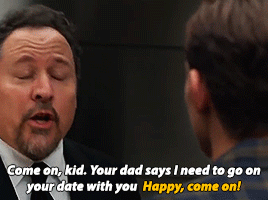*creepy Angelic Hymns Eminate*

*creepy angelic hymns eminate*
More Posts from Lrs35 and Others
The Two Types of Pacing
Pacing is a tricky, tricky thing. Hopefully, by breaking it down into two schools of thought, we can better our understanding of maintaining effective pacing.
as requested by @whisperinghallwaysofmirrors
First, Some Definitions
According to Writer’s Digest, narrative pacing is “a tool that controls the speed and rhythm at which a story is told… [H]ow fast or slow events in a piece unfold and how much time elapses in a scene or story.“
Pacing can be a lot of things. Slow, fast, suspenseful, meandering, boring, exciting, et cetera et cetera. While we don’t want meandering or boring, getting it to be the other things can be a feat.
As I go through all of this, I would like to say that the number one thing you should be keeping in mind with the pacing of your story is the purpose.
What is the purpose of this story, scene, dialogue, action, arc, plot point, chapter, et al? This and only this will keep you on track the whole way through.
Without further ado, here are the two types of pacing…
Micro Pacing
This, to me, is the harder of the two. Macro pacing usually comes naturally with our understanding of overall story structure that we see in books and movies. Micro is much more subjective and labor-intensive.
The first step of every scene you write is to identify what kind of pacing it needs to be effective. Is a slower pace going to nail in the emotional tone? Is a faster pace going to convey how urgent the scene is? Is choppy going to show how chaotic it is? How much attention to detail is needed? Et cetera. And even with the scene’s tone, there are also tones within with action, dialogue, and narrator perception.
There is no one-size-fits-all trick to mastering pacing. All you can do is try to keep it in mind as you draft. Don’t let it consume you, though. Just get it down. After drafting, look at the pacing with a critical eye. Do important scenes go too fast? Are unnecessary things being dragged out? Is this scene too detailed to be suspenseful?
A lot of errors in pacing are quick fixes. The adding or removal of details, shortening or lengthening of sentences, changing descriptions. However, these quick fixes do take a while when you have to look at every single scene in a story.
Macro Pacing
Rather than the contents of a scene, this deals with everything larger. Scenes, chapters, plot points, storylines, subplots, and arcs. This is taking a look at how they all work for each other when pieced together.
One of the biggest resources when it comes to analyzing macro pacing is story structure philosophy. The common examples are Freytag’s Pyramid, the 3-Act Structure, Hero’s Journey, and Blake Snyder’s 15 Beats. They follow the traditional story structure. Exposition, catalyst, rising action, climax, and resolution (albeit each in different terms and specificity). Though some see it as “cookie-cutter”, 99% of effective stories follow these formats at a considerable capacity. It’s not always about how the story is told, but rather who tells it. But I digress.
Looking at these structures, we can begin to see how the tried-and-true set-up is centered around effective pacing.
The beginning, where everything is set up, is slower but short and sweet. The catalyst happens early and our MC is sent out on a journey or quest whether they like it or not. The trek to a climax is a tricky stage for maintaining effective pacing. Good stories fluctuate between fast and slow. There is enough to keep it exciting, but we’re given breaks to stop and examine the finer details like theme, characterization, and arcs.
The edge before the climax is typically when the action keeps coming and we’re no longer given breaks. The suspense grabs us and doesn’t let go. This is the suspense that effectively amounts to the crescendo and leads to the emotional payoff and release that follows in the resolution. The resolution is nothing BUT a break, or a breather if you will. Though it is slower like the exposition, it is longer than that because this is where we wrap everything up for total closure. This is what the reader needs, rather than what they want. So you can take your time.
Not every story has to follow this recipe step-by-step. Critically acclaimed movies such as Pulp Fiction, Frances Ha, and Inside Llewyn Davis* break the traditional structure. However, they still keep certain ingredients in it. Whether it be the concept of a climax, the idea of a journey, or the overall balance of tension and release.
If you’re struggling with the macro side of your story’s pacing, I would try to identify what the weakest areas are and see if applying these story structure concepts and methodology strengthens it at all. If not, it may be that your story idea doesn’t fit the “substance” requirement of an 80k+ word novel. It may need more or fewer subplots or an increase of conflict or more things getting in the MC’s way. You could also see if adapting it to a shorter medium (novella, et al) or a longer medium (series, episodics, et al) would alleviate the pacing issues.
*sorry all my references are movies and not books, but I’ve seen more movies than I’ve read books
In Short–
Pacing, both macro and micro, are incredibly subjective concepts. The only way to really find out how effective your story’s pacing is, is to look at it through the lens of traditional structures and ask for feedback from beta readers. How a reader,who doesn’t know the whole story like you do feels about pacing is the best resource you could have.






Avengers AU - If Tony was Peter’s biological father
Tony is super protective of his son. And Peter, inspired by his dad, becomes Spiderman anyway (his dad and his Uncle Rhodey figure him out in a second though).
My other Avengers AUs
happy summer to dykes in tank tops and basketball shorts, goths who's makeup is melting, little kids catching frogs and fireflies, guys who just bring their guitar everywhere now, 13 yr olds very obviously in their emo phase during a family vacation, gas station employees, old people sitting on porches, and dogs swimming at the beach

library classification labels
Once I stop procrastinating and starts reading 365 pages books in two days again then it's all over for everyone.

'If you don't like graffiti look away like you do for genocide"
Seen in Austin, Texas

Taim's family is still low on funds and needs donations! Even as low as €5 can make the difference! Please share and donate if you can.
This fundraiser is one of the "low on donations" fundraisers from @/el-shab-hussein's list of verified fundraisers.

sooo when are you dropping the links. to texts about religion and sexuality and transgression
closet devotions by richard rambuss
the man jesus loved by theodore w. jennings, jr
jonathan loved david by tom horner
the sex lives of saints by virginia burrus
toward a theology of eros
i also recommend the essay "gendering jesus crucified" by richard c. trexler that you can find here & richard rambuss' essay "pleasure and devotion: the body of jesus and seventeenth-century religious lyric" in queering the renaissance
-
 hollowcportcresources reblogged this · 1 month ago
hollowcportcresources reblogged this · 1 month ago -
 spaghettiwritten reblogged this · 1 month ago
spaghettiwritten reblogged this · 1 month ago -
 ocean-of-junk reblogged this · 2 months ago
ocean-of-junk reblogged this · 2 months ago -
 ocean-of-junk liked this · 2 months ago
ocean-of-junk liked this · 2 months ago -
 road-killed reblogged this · 3 months ago
road-killed reblogged this · 3 months ago -
 honeymarvel liked this · 3 months ago
honeymarvel liked this · 3 months ago -
 nasermater reblogged this · 3 months ago
nasermater reblogged this · 3 months ago -
 joypuris liked this · 3 months ago
joypuris liked this · 3 months ago -
 cherrywhipstick liked this · 3 months ago
cherrywhipstick liked this · 3 months ago -
 hesperidia reblogged this · 3 months ago
hesperidia reblogged this · 3 months ago -
 goopygoblinbrain reblogged this · 3 months ago
goopygoblinbrain reblogged this · 3 months ago -
 goopygoblinbrain liked this · 3 months ago
goopygoblinbrain liked this · 3 months ago -
 wingsingthings reblogged this · 3 months ago
wingsingthings reblogged this · 3 months ago -
 xia-thebimbo-of-titznwine liked this · 3 months ago
xia-thebimbo-of-titznwine liked this · 3 months ago -
 17cherrys liked this · 3 months ago
17cherrys liked this · 3 months ago -
 kurotrbl liked this · 3 months ago
kurotrbl liked this · 3 months ago -
 ext1nctanimals liked this · 3 months ago
ext1nctanimals liked this · 3 months ago -
 riarnu reblogged this · 3 months ago
riarnu reblogged this · 3 months ago -
 riarnu liked this · 3 months ago
riarnu liked this · 3 months ago -
 found-the-secrets-in-your-eyes reblogged this · 3 months ago
found-the-secrets-in-your-eyes reblogged this · 3 months ago -
 egg2k16 reblogged this · 3 months ago
egg2k16 reblogged this · 3 months ago -
 haalat-e-wajd reblogged this · 3 months ago
haalat-e-wajd reblogged this · 3 months ago -
 5dollarporno reblogged this · 3 months ago
5dollarporno reblogged this · 3 months ago -
 stbrunette liked this · 3 months ago
stbrunette liked this · 3 months ago -
 lluviagf reblogged this · 3 months ago
lluviagf reblogged this · 3 months ago -
 gothcoquetteprincess reblogged this · 5 months ago
gothcoquetteprincess reblogged this · 5 months ago -
 gothcoquetteprincess liked this · 5 months ago
gothcoquetteprincess liked this · 5 months ago -
 milkweb liked this · 7 months ago
milkweb liked this · 7 months ago -
 thesacredwounds liked this · 7 months ago
thesacredwounds liked this · 7 months ago -
 weakful reblogged this · 8 months ago
weakful reblogged this · 8 months ago -
 beanfish05 reblogged this · 8 months ago
beanfish05 reblogged this · 8 months ago -
 38ravensand39crows liked this · 8 months ago
38ravensand39crows liked this · 8 months ago -
 crimson-jester liked this · 8 months ago
crimson-jester liked this · 8 months ago -
 actingappalled reblogged this · 8 months ago
actingappalled reblogged this · 8 months ago -
 actingappalled liked this · 8 months ago
actingappalled liked this · 8 months ago -
 aelita15 reblogged this · 8 months ago
aelita15 reblogged this · 8 months ago -
 aelita15 liked this · 8 months ago
aelita15 liked this · 8 months ago -
 suchgaypudding liked this · 8 months ago
suchgaypudding liked this · 8 months ago -
 backatthebein liked this · 8 months ago
backatthebein liked this · 8 months ago -
 alligatorprince reblogged this · 8 months ago
alligatorprince reblogged this · 8 months ago -
 exquisiteplace reblogged this · 8 months ago
exquisiteplace reblogged this · 8 months ago -
 isolationstreet reblogged this · 8 months ago
isolationstreet reblogged this · 8 months ago -
 possum-tooth liked this · 8 months ago
possum-tooth liked this · 8 months ago -
 milfgertruderobinson reblogged this · 8 months ago
milfgertruderobinson reblogged this · 8 months ago
